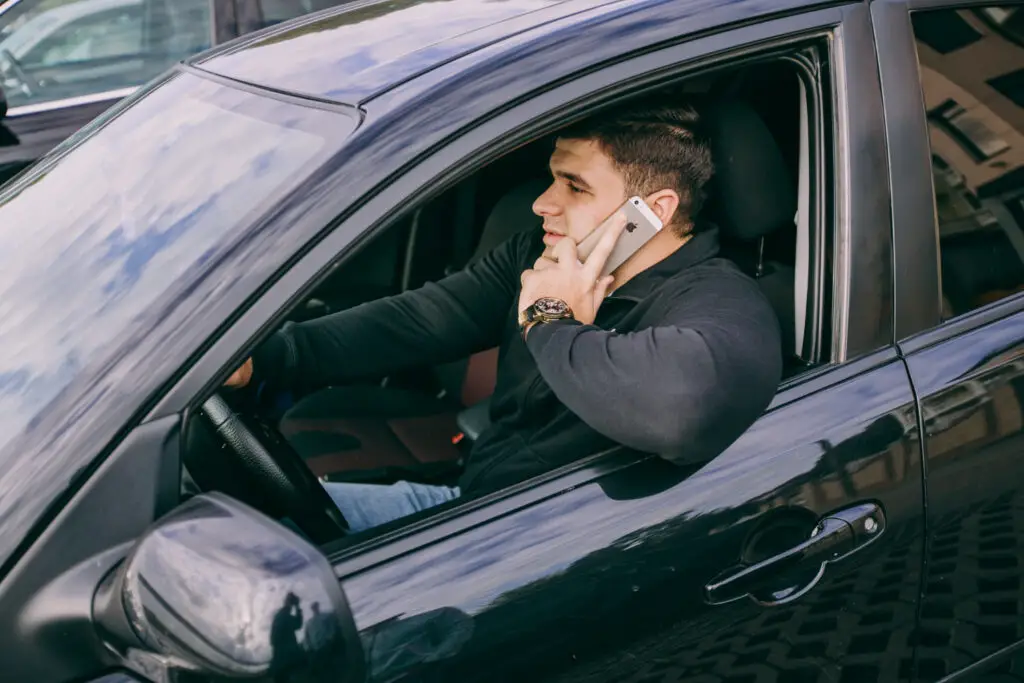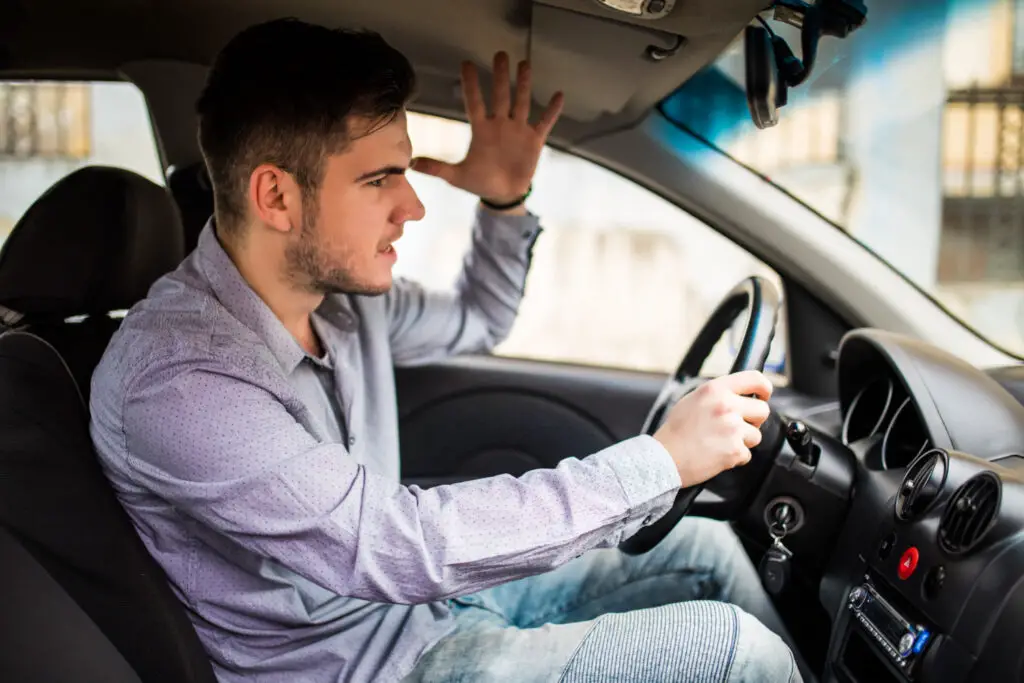Accidents often happen unexpectedly amid the intricate flow of traffic. In a recent TikTok video, the lens focuses on the mayhem of merging lanes, prompting a crucial question: who bears responsibility when two cars merge into the same lane simultaneously? It’s critical to grasp the legal nuances when cars collide during a merge. Let’s delve deeper into the liability of simultaneous merging and the legal consequences when two vehicles vie for the same lane.
Understanding Miss-and-Run:
The term “miss-and-run” or phantom driver accident may seem elusive, but its impact is significant. This happens when a driver, without physically touching, causes a collision with another vehicle. Picture swerving to avoid something, only to end up in a mess of wrecked cars. Non-contact accidents usually happen when drivers try to prevent crashes, but the result often turns against them. Even though there’s no physical touch, the consequences can be substantial. It’s like trying to sidestep trouble but ending up in a situation you couldn’t evade. Avoiding collisions can sometimes mean escaping the aftermath.
Liability Beyond Physical Contact
Contrary to common belief, avoiding physical contact doesn’t absolve a driver of responsibility. If drivers break the rules, run a stop sign, change lanes abruptly, or do something risky, they’re still liable. Just dodging a crash doesn’t clear them; their actions triggered the mess. Whether it’s another driver, a pedestrian, a child, or even a pet causing chaos, figuring out who’s at fault is vital for legal steps. Assigning blame is critical, even when the collision doesn’t involve direct contact. It’s about actions that lead to trouble, not just the impact itself.
External Forces and Reporting

In the video, Attorney Ugo Lord explains the legal concept of a miss-and-run or phantom car accident. This occurs when a car, due to negligence, causes an accident without physically colliding with another vehicle. However, the video emphasizes that the situation discussed is not a miss-and-run. Instead, it depicts two cars merging into the same lane simultaneously. Both drivers overreact, leading to a collision. Attorney Lord clarifies that both drivers share responsibility for damages in such cases. This analysis serves as a reminder to practice defensive driving, avoiding overreactions that can escalate situations on the road.
The Five Pillars of Negligence
To understand simultaneous merging liability, let’s explore the five key aspects of negligence cases in California. This breakdown helps us comprehend legal responsibility in accidents within the state.
1. Duty:
Every driver must behave responsibly in a regular car or truck and obey traffic laws. Non-professional drivers are responsible for driving safely, while commercial operators like buses or taxis have an even greater responsibility. They are held to a high standard, which provides virtual safety for their passengers. So, it’s not just about following the rules; it involves increased responsibility, especially for carriers. Specifically, different drivers on the road have other responsibilities.
2. Breach:
When a driver doesn’t meet the expected level of care, it’s considered a breach. Considering the circumstances, the jury decides if the actions breach their duty. If a driver falls short of the standard of care, the jury steps in to evaluate. They weigh the context to determine if the behavior qualifies as a breach of duty. In simpler terms, when a driver doesn’t meet the expected care level, the jury decides if they’ve breached their duty based on the situation.
3. Cause-in-Fact:

In the legal realm, we explore “but-for” causation, posing the question: would the accident have happened without the negligent actor’s actions? This concept delves into the essential link between the conduct of the person at fault and the occurrence of the accident. Simply put, it examines whether the negligent party’s behavior was a crucial factor leading to the incident. Establishing a direct connection between the responsible party’s actions and the resulting accident is a vital criterion.
4. Proximate Cause:
This concept focuses on predictability. The plaintiff is liable for acts involving negligence but not for unforeseen consequences. But, when a person is negligent and causes harm, he is responsible for the direct results of his actions, but he cannot be held responsible for unexpected events.
5. Damages:
You need physical harm in California to claim compensation for personal injury or property damage. Even scary, escaping a close call doesn’t count as negligence. To get compensation, there must be actual harm. Even if it scares you, a near miss doesn’t meet California’s legal criteria for negligence.
Explore the legal implications of lane splitting in our in-depth analysis.
Analyzing the Merging Mishap
Attorney Ugo Lord breaks down the simultaneous merging liability in his analysis, clarifying that it’s not a miss-and-run situation. Two vehicles merging into one lane simultaneously leads to a collision. Both drivers, reacting strongly, add to the confusion. Although no physical touch occurs, the blame is shared. Each driver is responsible for their damages in this scenario. The absence of direct contact doesn’t absolve either party from accountability, making it a joint responsibility for the collision.
Lessons in Defensive Driving
The video draws attention to the vital role of defensive driving in preventing accidents. Instead of reacting impulsively, drivers should be cautious, communicate clearly, and navigate shared lanes carefully. Recognizing that overreacting can worsen matters is crucial for preventing avoidable collisions. The video highlights the significance of staying composed, alert, and considerate while maneuvering the road. Transitioning from impulsive reactions to thoughtful responses can make a substantial difference in averting unnecessary mishaps during shared lane situations.
The Domino Effect of Overreaction

When emotions run high, drivers react strongly, making things worse instead of better. The video’s merging issue is a clear example of this chain reaction of overreactions. Both drivers, sharing the same lane, make sudden moves, resulting in a crash that calm driving could have prevented. Ultimately, a collision happened due to their aggressive maneuvers, highlighting the need for more composed driving in shared spaces.
Conclusion
Navigating simultaneous merging liability demands skilled driving and a clear grasp of legal details. The video delves into the outcomes of cars merging simultaneously, stressing the concept of shared responsibility. We, as drivers, need to adopt defensive driving, preventing exaggerated reactions leading to accidents. Ultimately, responsible driving guarantees safety for all on the roads. Understanding the legal aspects of simultaneous merging is vital for promoting safe and considerate driving on our streets.

